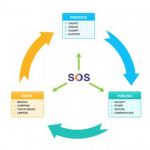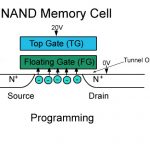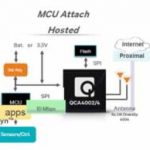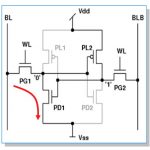In the late 1990s and early 2000s, during the adolescent days of the system-on-chip (SoC) design movement, there was a lot talk about IP and design reuse, but it was seldom put into practice. A decade later, SoC turned into a juggernaut with a tripartite alliance of chipmakers, IP suppliers and semiconductor manufacturing fabs.… Read More
 Yuning Liang’s Painstaking Push to Make the RISC-V PC a RealityAt Embedded World 2025 in Nuremberg, Germany, on…Read More
Yuning Liang’s Painstaking Push to Make the RISC-V PC a RealityAt Embedded World 2025 in Nuremberg, Germany, on…Read More Arm Lumex Pushes Further into Standalone GenAI on MobileWhen I first heard about GenAI on mobile…Read More
Arm Lumex Pushes Further into Standalone GenAI on MobileWhen I first heard about GenAI on mobile…Read MoreThreat Detection: How To Keep the Crown Jewels Secure
Let’s just take it as a given that securing IP design data is critical. It’s rather like saying that it’s a good idea to have security in the Tower of London to stop the crown jewels being stolen. IP blocks are the crown jewels of an SoC company.
Data now must be secured within the collaborative teams that share that… Read More
SoC and Foundry Update 2H 2015!
Rarely do I fly first class but I did on my recent trip to Asia. It was one of the new planes with pod-like seats that transforms into a bed. The flight left SFO at 1 A.M. so I fell asleep almost immediately missing the first gourmet meal. About half way through the flight I found myself barely awake staring straight up and what do I see? STARS!… Read More
Adding NAND Flash Can Be Tricky
As consumers, we take NAND flash memory for granted. It has worked its way into a vast array of products. These include USB drives, SD cards, wearables, IoT devices, tablets, phones and increasingly SSD’s for computer systems. From the outside the magic of flash memory seems quite simple, but we have to remember that this is a technology… Read More
TSMC is the Top Dog in Pure-Play Foundry Business
We all have echoed the fact that the arrival of fabless business model in the semiconductor industry has transformed it completely. The book, “Fabless: The Transformation of the Semiconductor Industry” provides several stories around that. In the backdrop of that, one key point to ponder upon is the start of pure-play foundries;… Read More
Solido Wrote the Book on Variation
When I studied mathematical analysis, one of the things that we had to prove turns out to be surprisingly difficult. If you have a continuous function and at one point it is below a line (say zero) and at another point it is above zero, then there must be a point at which the value is exactly zero. In effect, a continuous function can’t… Read More
Xtensa core in Qualcomm low-power Wi-Fi
Wi-Fi has this reputation as being a power hog. It takes a relatively big processor to run at full throughput. It is always transmitting all over the place, and it isn’t very efficient at doing it. Most of those preconceived notions arose from older chips targeting the primary use case for Wi-Fi in enterprise and residential environments.… Read More
Optimizing SRAM IP for Yield and Reliability
My IC design career started out with DRAM at Intel, and included SRAM embedded in GPUs, so I recall some common questions that face memory IP designers even today, like:
- Does reading a bit flip the stored data?
- Can I write both 0 and 1 into every cell?
- Will read access times be met?
- While lowering the supply voltage does the cell data retain?
Michael Sanie Plays the Synopsys Verification Variations
I met Michael Sanie last week. He is in charge of verification marketing at Synopsys. I know him well since he worked for me at both VLSI Technology and Cadence. In fact his first job out of college was to take over support of VLSIextract (our circuit extractor), which I had written. But we are getting ahead.
Michael was born in Iran and… Read More
China: drag on global semiconductor market?
The Chinese stock market (as measured by the Hang Seng Index) dropped 11% from August 14 to August 24 over concerns of a slowing economy. In reaction, the U.S. stock market (as measured by the S&P 500) dropped 11% from August 17 to August 25. The China market has since rebounded 2% while the U.S. market rebounded 5%. Will a slowing… Read More










Semiconductor Equipment Spending Healthy